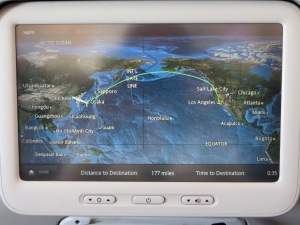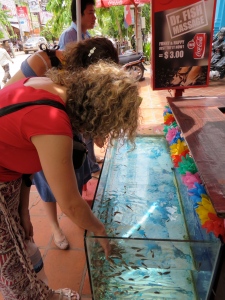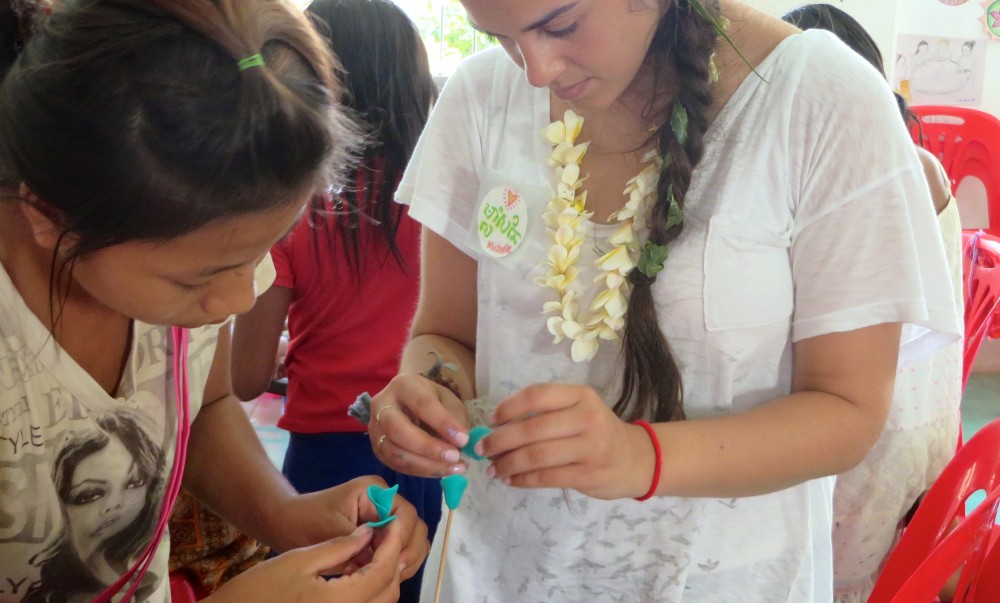“Using Our Voices”
By Bethany Wells
“The realization that one exists as a whole of mutually conditioned relationships and that one is absolutely connected with all of existence may be the next step in human evolution” -Francis Vaughn
The NCAS-I team has been working with enthusiasm and dedication in preparation for our 2nd annual learning-service opportunity to work with women and girls who have escaped the sex trade. When I began my journey into art therapy it was with a clear intention of working cross-culturally, with marginalized and underserved communities, and in the field of social justice. When the possibility to get involved with the issue of sex trafficking by using art as a means toward healing arose, I knew this was an incredible chance to learn about, witness, and work with the suffering of the world. That said, there is still so much I don’t understand about the complex and pervasive system of deception, coercion, betrayal, sexual exploitation, and brutality that exists in and between almost every culture across the globe.
It can be argued that sex trafficking begins with poverty. With nearly every survivor there is a story of a family who did not have enough money to feed their children, could only afford to send one child to school so they chose the boy, and/or unequal opportunity for women and girls to find other sources of income. It is also speculated that most females who are or have been sex slaves or work(ed) in the sex industry have a history of abuse and/or addiction. But on top of these intertwining explanations, there are human beings that prey on the vulnerability of the poor, homeless, and young; that drug, kidnap, manipulate, coerce, control, intimidate, and physically, sexually, emotionally and psychologically abuse other human beings. Modern day sexual slavery is an organized criminal enterprise that condemns millions of women and children to social (and often literal) death, for the sexual pleasure and profit of others.
Where does one begin to address this problem? Why is there such disparity in access to resources throughout the world? Why is there still unequal opportunity for education and employment between genders? And how could anyone be capable of committing such atrocities against another person?
Learning to be therapists, it is difficult enough to face the reality of sexual and domestic violence as it operates interpersonally or in a single family. How much more difficult then, to face the reality of sexual violence as exercised by an elaborate and alarmingly lucrative industry that operates in nearly every community, systematically reducing victims to the condition of slavery (Herman, 2004). Knowing this phenomenon, studying the staggering worldwide statistics, and hearing the stories of survivors who have chosen to break the silence, fills my head with shock, horror, disgust, and dread. Dread that the problem is too big, too deeply rooted in patriarchy and capitalism, power and corruption. But when I look at organizations like Lotus Outreach International, Chab Dai, Polaris Project, iEmpathize, Truckers Against Trafficking, NCAS-I, and more, I see hope. I know that it may be too much for one person but with the number of activists, advocates, and brigades increasing every day, and the ability to approach this issue from countless different angles, change is possible.
Since my time with this project began I have had many conversations about the issue of sex trafficking with people who were either not aware of modern day slavery, or had a vague idea but assumed it only happened “over there” in countries far away and very different from ours. Thirty years ago, rape, domestic violence, and incest were similarly invisible, despite their high prevalence. A mass movement was required to bring these abuses into public awareness, which has resulted in enormous changes in the criminal justice system and victim advocacy. One hundred and fifty years after President Lincoln signed the Emancipation Proclamation freeing slaves during the civil war, it is astonishing that we still face the need to fight slavery. But the fact is—today, human trafficking is a $32-billion worldwide industry with more than 2.7 million people enslaved; has been reported in all 50 states, and the number of victims in the United States are estimated in the hundreds of thousands (U.S. Department of Justice).
In addition to the increasing numbers of organizations working to eradicate human trafficking, progress is being made regarding institutional accountability. In September, President Obama pledged his commitment to renew the Trafficking Victims Protection Act (TVPA) during a highly public speech at the Clinton Global Initiative. Some say it was the longest speech on slavery by a U.S. president since the Emancipation Proclamation. The president also announced an executive order to strengthen U.S. efforts to stop human trafficking in government contracting, pledged to provide relevant officials and agencies with training and guidance programs on human trafficking, and promised to expand resources and services for trafficking survivors. On March 7th, 2013, hundreds of advocates, survivors, law enforcement officials and lawmakers gathered to witness President Obama sign legislation to renew the TVPA.
Ending modern slavery will not come with one speech, one executive order, or one signed piece of legislation. It will come if all of us—citizens, governments, corporations, and the philanthropic community—make it the priority it needs to be. “The demands for young adolescent girls, the abuses perpetrated by traffickers and brothel owners, and the social attitudes toward the women who become their victims are all issues that need to be addressed on a global level” (Freed 2004). The social and political institutions that support prostitution and the individuals who perpetuate and maintain such abuses for personal and financial gain need to be stopped. Only then will we be on our way to ensuring that every person is afforded the human dignity we deserve, no matter where we were born or what circumstances we find ourselves in.
In our recent conversations about ethical marketing and fundraising, NCAS-I members have grappled with how to address the issue of sex trafficking in a way that grabs and holds attention without sensationalization or unintentionally contributing to the exotification of victims, people’s fascination, disgust, or misconceptions, and we have experienced some paralyzing uncertainty regarding the complexity of language. But still, we have to talk about it. The main contributor to any cycle of violence (in addition to shame and stigma) is silence. We must use our voices and privilege (ethically, sensitively and respectfully of course) in ways that victims can’t, in order to get this issue on everyone’s radar. And for those of us who are artists and aspiring art therapists, we have another, far-reaching and important instrument for activism and healing. I am beyond excited to be a part of the large community of people working to eradicate this system of abuse and to assist women in discovering and/or reclaiming their incredible power.
Freed, W. (2004). From duty to despair: Brothel prostitution in Cambodia. In M. Farley, Prostitution, trafficking and traumatic stress (pp. 1-13). NY, NY: Routledge.
Herman, J.L. (2004). Introduction. In M. Farley, Prostitution, trafficking and traumatic stress (pp. 133-146). NY, NY: Routledge.


 Please note that while individual members have varying views on topics discussed in our blog, NCAS-I as a whole honors multiple perspectives, within respectful reason, and does not aim to censor material shared in our blog writings. So please keep this in mind while reading our blogs. And please feel free to add your perspective, too.
Please note that while individual members have varying views on topics discussed in our blog, NCAS-I as a whole honors multiple perspectives, within respectful reason, and does not aim to censor material shared in our blog writings. So please keep this in mind while reading our blogs. And please feel free to add your perspective, too.

